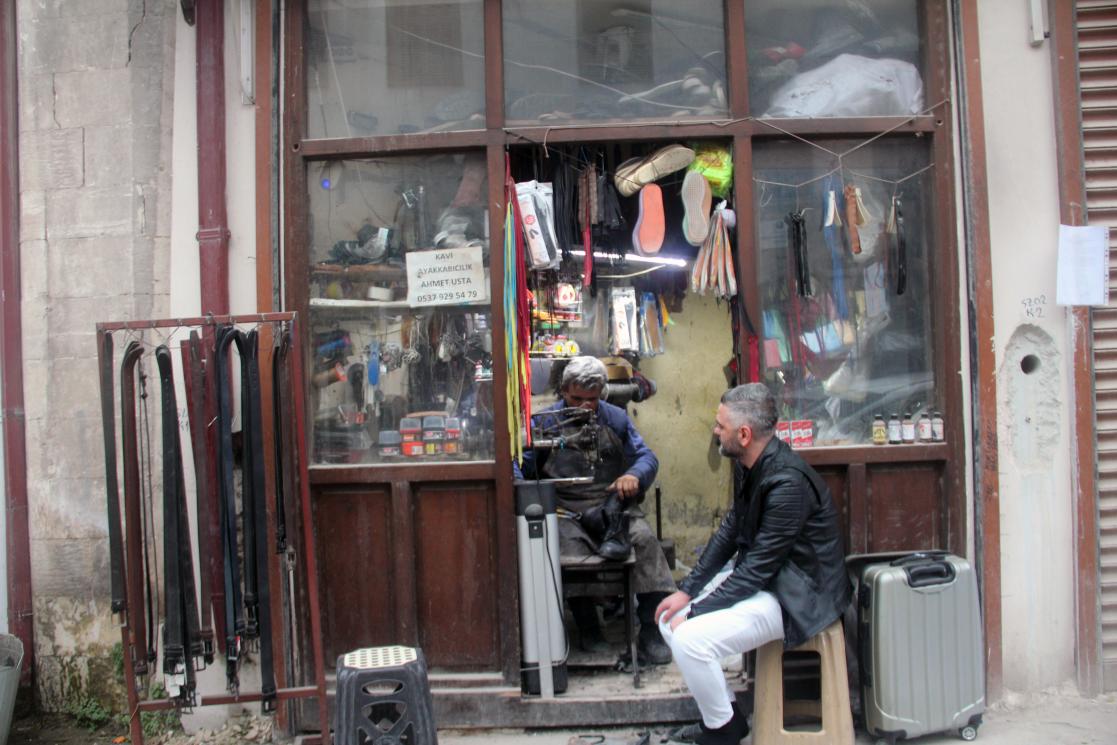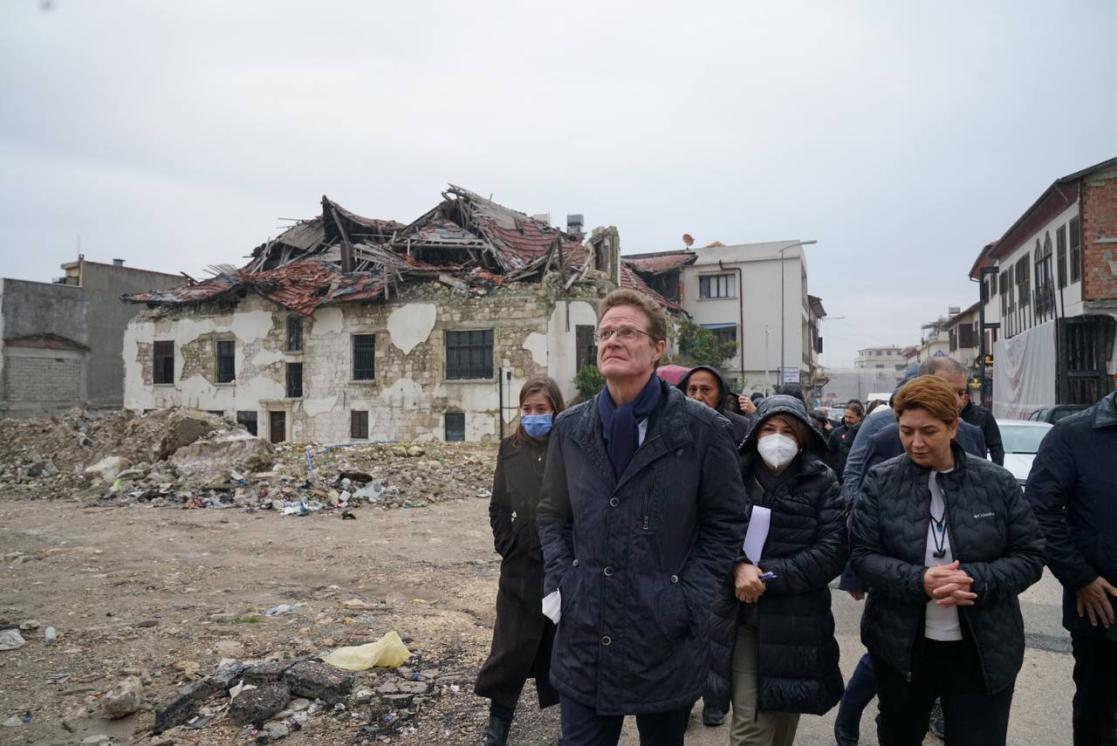Restoration of Hatay’s Kurtuluş Street with EU Support

Ender Karateke, a biologist born in Hatay (Antakya), describes the importance of Kurtuluş Street for daily life in the words above. The street, severely damaged by the February 2023 earthquakes, covers an area of 1.5 kilometres where the historical fabric is dense. Except for one or two shopkeepers, there is no one on the street, which was once bustling with activity before the earthquakes. Among the damaged buildings are the Habib-i Neccar Mosque, the first known mosque in Anatolia, the Jewish Synagogue of Antakya, the Greek Orthodox Church, the Catholic Church and the Protestant Church.”
World’s first illuminated street
According to Linda Urhan, born in Antakya and Member of the Board of Directors of the Association for Sustainability in Tourism (TUSDER), the street is of great historical and cultural importance. Urhan, who travels frequently to Antakya for family and work reasons, says:
“Kurtuluş Street, formerly known as Herod Street, was the first street in the world to be illuminated; it was lit with torches. As in every corner of old Antakya, home to many civilisations throughout history, you find traces of these ancient civilisations and the solidarity of people of different religions on Kurtuluş Street. Antakya was destroyed and rebuilt many times. When you look at the old maps, you see that Kurtuluş Street has survived to the present day by preserving its feature as a street permanently dividing the city into two, with slight deviations. While Antakya residents mourn their losses, they also fear the loss of Antakya. Therefore, in my opinion, the reconstruction of this street by remaining faithful to its historical texture will be very good for the spirit of the city and its inhabitants.”

AB
On the street, 56 registered buildings will be restored, and buildings will be rebuilt in harmony with the original texture
The project to revitalise Kurtuluş Street is implemented by the Ministry of Culture and Tourism and supported by the European Union (EU). Betül Kiminsu, Deputy Director General of Cultural Heritage and Museums, reflects:
“As the Ministry of Culture and Tourism, we implemented our disaster emergency action plan immediately after the earthquake. After the damage assessment work on Kurtuluş Street, we separated the wrecks of historical buildings with a label system to prevent them from mixing with other debris. The fragments we found in the wreckage of these buildings, such as inscriptions, bells or panels, were stored in warehouses. We reinforced the slightly damaged registered buildings on the street with steel. We signed a protocol with the Ministry of Environment and Urbanisation to declare 307 hectares of protected area as a risky area, and we started to revise the conservation zoning plan for this area. We prepared urban design projects for Kurtuluş Street. Starting with this street, we are making efforts to revive Hatay’s old life.”

AB
Shoemaker Ahmet Kalbi Photo by Ilya U. Topper
A crucial step to revitalise the city
The shopkeepers and producers on Kurtuluş Street also welcome this development. One of them is Gülay Gül: “I was producing soap in a 500-century-old historical soap house on Kurtuluş Street. I was acting as a bridge between the past and the future, and also keeping our traditional product, laurel soap, alive. In the earthquake, my soap house was completely destroyed. As it is a registered building, the Ministry of Culture and Tourism authorities labelled the debris and stored it for restoration. The work to revitalise Kurtuluş Street continues. I think this project is a crucial step to revive the whole city of Antakya.”
Ahmet Kalbi, a shoe repairer, is another shopkeeper on this street. He returned to Hatay, which he had left after the earthquakes, and reopened his shop even though it was damaged. However, as his building will be demolished for reconstruction, he will move to a container shop elsewhere. He will return to Kurtuluş Street, after the reconstruction.
To protect and revitalise the historical texture of Kurtuluş Street, 56 registered buildings will be restored; 126 buildings will be rebuilt in line with the original texture; and the urban elements of the street, including walkways, lighting and urban furniture, will be improved.

AB
Ambassador visited Kurtuluş Street in January 2024
EU support for cultural heritage
The Head of the EU Delegation to Türkiye, Ambassador Nikolaus Meyer-Landrut, who visited Hatay in January 2024, says: “We support the work of the Ministry of Culture and Tourism in Antakya to revitalise the social, cultural and historical fabric of the area as a whole. Initial funding has been allocated for this work from the EU Solidarity Fund. We will continue to support the recovery and preservation of cultural heritage in the earthquake area.”
The €400 million grant to Türkiye from the EU Solidarity Fund will be used to construct hospitals, schools and water infrastructure, and help restore cultural heritage in areas affected by the earthquakes.





